Smooth Green Snake
- December 17, 2023
- 0 comment
The Smooth Green Snake, scientifically known as Opheodrys vernalis, is a striking and slender serpent native to North America. Renowned for its vibrant green coloration, this non-venomous snake is often considered one of the most visually appealing among its species.
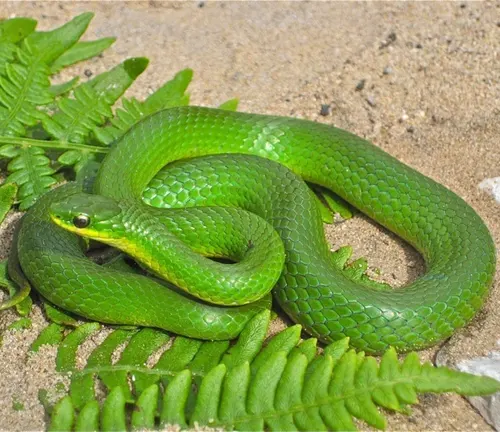
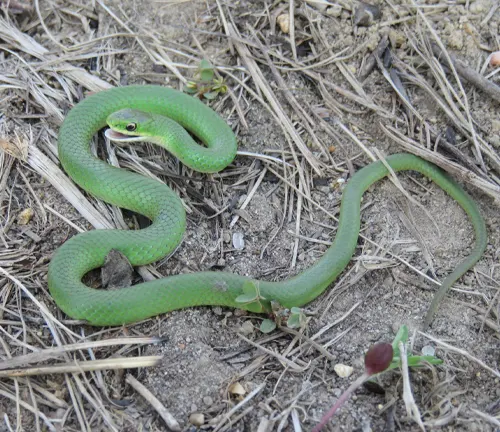
With a slender body and a length ranging from 14 to 20 inches, the Smooth Green Snake is characterized by its smooth scales and distinct lack of keels. Its eyes, which are large and round, contribute to its charming appearance. Found in a variety of habitats, including grasslands, meadows, and open woodlands, these snakes are adept climbers and may be spotted in shrubs or low vegetation.
Feeding primarily on insects, especially caterpillars and spiders, the Smooth Green Snake plays a crucial role in controlling pest populations. Despite its dazzling appearance, this species is relatively docile and is not known for aggressive behaviour. Conservation efforts are underway to ensure the preservation of its natural habitats and protect this delightful serpent from potential threats.
| Characteristic | Description |
|---|---|
| Scientific Name | Opheodrys vernalis |
| Size | 14 to 20 inches in length |
| Body Shape | Slender and elongated |
| Coloration | Vibrant green |
| Scales | Smooth, lacking keels |
| Eyes | Large and round |
| Habitat | Grasslands, meadows, open woodlands |
| Climbing Ability | Adept climbers, often found in shrubs or low vegetation |
| Diet | Primarily insects, including caterpillars and spiders |
| Venom | Non-venomous |
| Behavior | Relatively docile, not known for aggressive behavior |
| Conservation Status | Subject to conservation efforts for habitat preservation |
| Ecological Role | Plays a role in controlling pest populations |
Venomous or Not Venomous?
Dispelling myths and misconceptions, the Smooth Green Snake is a non-venomous species. Despite its striking appearance, it poses no threat to humans. This gentle serpent relies on its other unique features and behaviors to navigate the natural world, highlighting the fascinating diversity within the snake family.
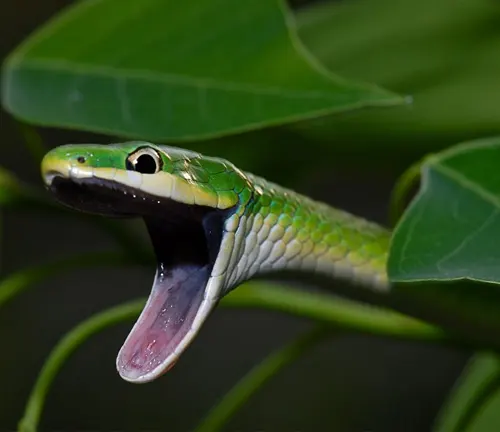
Ecological Importance
Delving into the ecological role of the Smooth Green Snake unveils its significance in maintaining a balanced ecosystem. As a predator primarily feeding on insects, especially caterpillars and spiders, this species plays a vital role in controlling pest populations. Its presence contributes to the delicate web of life, showcasing the interconnectedness of species in the natural world.

Habitat
Exploring the habitat preferences of the Smooth Green Snake reveals its adaptability. Thriving in grasslands, meadows, and open woodlands, these serpents are also skilled climbers, often finding refuge in shrubs or low vegetation. Understanding their habitat choices is essential for conservation efforts aimed at preserving these diverse ecosystems.
Behaviour
Contrary to common snake stereotypes, the Smooth Green Snake exhibits relatively docile behaviour. Known for its non-aggressive nature, this species relies on its agility and camouflage to navigate its surroundings. Observing its behaviour provides insight into the delicate balance between predator and prey in its ecosystem.
Art And Culture
Beyond the realms of science, the Smooth Green Snake has found its place in art and culture. Its vibrant green hues and graceful form inspire artists and storytellers, becoming symbolic in various cultural contexts. Unravelling these cultural connections adds another layer of richness to our understanding of this enchanting serpent.
Survival
Survival strategies employed by the Smooth Green Snake include its ability to blend seamlessly into its surroundings. The combination of its coloration and slender physique serves as an effective defense mechanism against potential predators. Examining these survival tactics sheds light on the adaptability and resilience of this species.
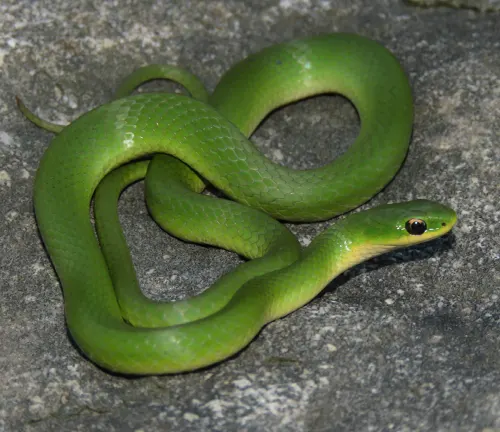
Conservation
As habitats face increasing threats, conservation efforts are crucial for the survival of the Smooth Green Snake. Protecting the grasslands, meadows, and woodlands it calls home is essential to maintaining healthy populations. Conservation initiatives aim to address the challenges posed by habitat loss and human encroachment, ensuring a sustainable future for this species.
Common Food
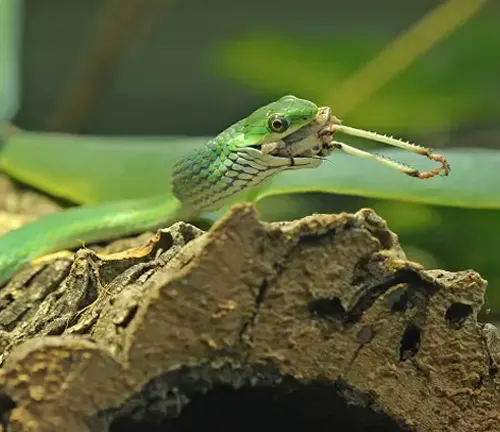
A peek into the dietary preferences of the Smooth Green Snake unveils a menu dominated by insects. From caterpillars to spiders, these serpents contribute to the delicate balance of the ecosystem by keeping pest populations in check. Understanding their common food sources reinforces the interconnections of species within their habitats.
Benefits
The benefits of the Smooth Green Snake extend beyond its captivating appearance. As a natural pest controller, this species offers ecological services that contribute to agricultural and environmental health. Appreciating these benefits underscores the importance of preserving biodiversity in our ecosystems.
Different Species
Northern Smooth Green Snake
(Opheodrys vernalis vernalis)
This is the nominate subspecies of the Smooth Green Snake and is found in various regions of North America, including parts of Canada and the United States. It shares the general characteristics of the Smooth Green Snake, such as its vibrant green coloration and slender body.
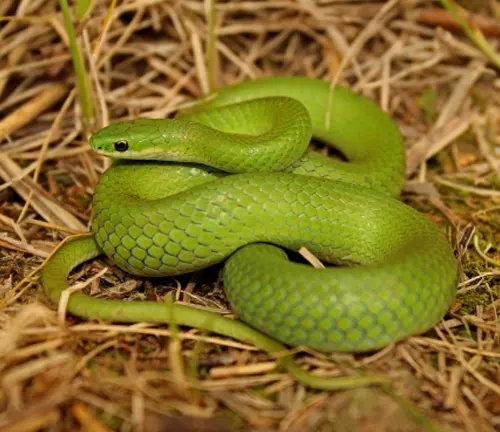
Midwestern Smooth Green Snake
(Opheodrys vernalis blanchardi)
This is another subspecies of the Smooth Green Snake found in the Midwestern United States. It is known for its similar appearance to the Northern Smooth Green Snake, with variations in distribution and possibly subtle differences in coloration.
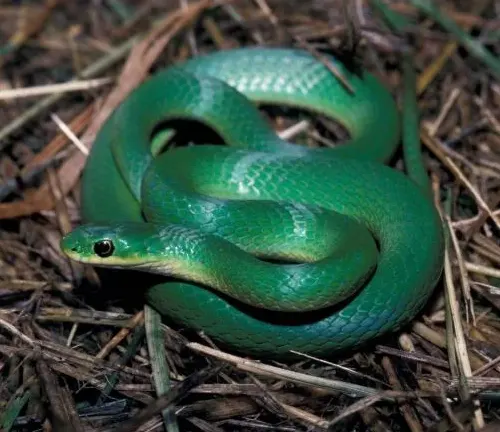
Conclusion
In conclusion, the Smooth Green Snake emerges as a fascinating and essential member of the natural world. From its botanical beauty and non-venomous nature to its ecological importance and cultural significance, this serpent exemplifies the intricate tapestry of life on Earth. As we strive to conserve and appreciate biodiversity, the Smooth Green Snake stands as a testament to the wonders that await exploration and understanding within our own backyards.
Frequently Asked Questions (FAQs)
1. What is a Smooth Green Snake?
The Smooth Green Snake (Opheodrys vernalis) is a non-venomous serpent known for its vibrant green coloration. It is native to North America and is recognized for its slender, elongated body.
2. Are Smooth Green Snakes dangerous to humans?
No, Smooth Green Snakes are not venomous and are considered harmless to humans. They rely on other means, such as camouflage and agility, for protection.
3. Where are Smooth Green Snakes found?
They are found in various habitats, including grasslands, meadows, and open woodlands, primarily in North America. The specific distribution may vary based on the subspecies.
4. What do Smooth Green Snakes eat?
Smooth Green Snakes primarily feed on insects, with a diet that includes caterpillars and spiders. They play a role in controlling pest populations in their ecosystems.
5. How big do Smooth Green Snakes get?
Smooth Green Snakes are relatively small, with a length ranging from 14 to 20 inches. They have a slender and graceful appearance.
6. Are Smooth Green Snakes good climbers?
Yes, Smooth Green Snakes are adept climbers. They are often found in shrubs or low vegetation, showcasing their ability to navigate diverse landscapes.
7. Why are they called “Smooth” Green Snakes?
They are named for their smooth scales, lacking keels or ridges. This gives them a sleek and glossy appearance, contributing to their distinctive look.
8. What is the conservation status of Smooth Green Snakes?
Conservation status may vary, but some populations may face threats due to habitat loss. Conservation efforts aim to preserve their natural habitats and ensure their survival.
9. Can Smooth Green Snakes be kept as pets?
In some regions, keeping native wildlife as pets may be regulated or prohibited. It’s crucial to research local laws and consider ethical considerations before attempting to keep them as pets.
10. Do Smooth Green Snakes have cultural significance?
Yes, they may have cultural significance in various regions. Their vibrant green coloration and graceful form can inspire art and folklore, contributing to their symbolic value in some cultures.



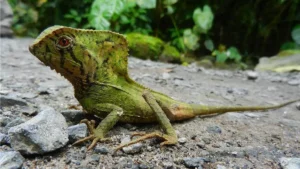

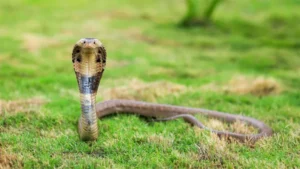
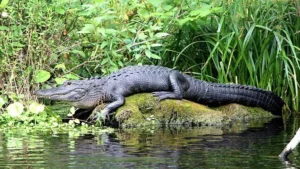
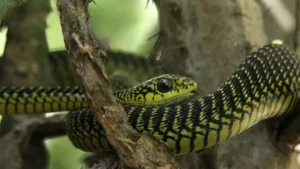

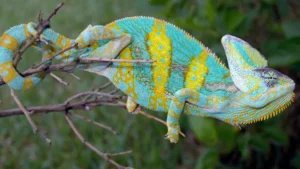
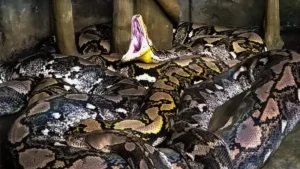
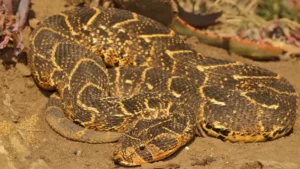
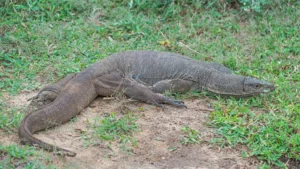

Leave your comment